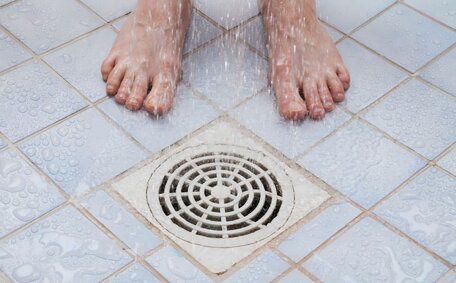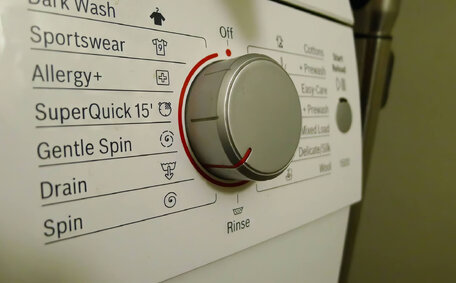
Baking Soda & Vinegar for Cleaning
Using baking soda & vinegar separately for cleaning is very effective; but mixing them dilutes their cleaning power. Learn how to use them properly.
Read MorePipe lining is an innovative trenchless method for your pipe repair on damaged pipes without the need for full pipe replacement. Pipe relining vs pipe replacement can also fix a wide range of pipe problems, including cracks, breaks, root intrusion and misalignments.
The process involves inserting a flexible epoxy resin lining into your plumbing’s existing pipe, which then hardens to form a smooth, watertight barrier.
Here at Lilyfield Plumbing, we offer very professional and comprehensive pipe relining services with extensive experience in the field across residential and commercial properties in Sydney. Compared to traditional pipe replacement methods, our repair drain solutions like relining your drainage system are less invasive, quicker, and decidedly cost effective. It also notably reduces property damage and disruption, whether it’s your plumbing system or storm water management that’s affected.
In this article, we’ll examine the pros and cons to determine if pipe relining is a highly effective solution for particularly bowed or misaligned pipes. we’ll evaluate the pros and cons, scrutinising technical feasibility compared to alternatives like full pipe replacement, and help you understand why you should choose pipe relining for your situation.
There are several common causes of bowed and misaligned pipes:
In summary, ground movement, temperature changes, installation errors, tree roots and corrosion are the main factors that commonly cause pipe bowing and misalignment issues over time.
There are a few key signs that may indicate your pipes are bowed, sagging or misaligned:
If you suspect any issues, A professional plumbing inspection using CCTV drain cameras can cleanly identify bowed and misaligned pipe sections. From here, repair solutions for your sewer can be recommended, focusing on how does pipe relining effectively correct these issues.
Some key signs of pipe deformation include visible distortions, leaks, gurgles, backups and pooling wastewater. If in doubt, call Lilyfield Plumbing on 1300 349 338 for a drain camera pipe assessment.
Pipe relining highly effective for correcting mildly to moderately bowed or misaligned pipes in some cases. There’s no difficulty for the flexible resin liners to navigate mild bends and deformations, coating the pipe inside surface to create a uniform channel.
However, in cases of extreme bowing or misalignment, relining only with a resin liner may not negotiate the distorted pipe path fully. Severely collapsed, crushed or disjointed pipes are also not suitable for relining.
During our professional onsite drainage assessments, we evaluate whether need for specific pipe solutions is apparent, we thoroughly inspect the pipe condition using CCTV drain cameras. From here, our team of highly experienced plumbers can advise on what pipe relining solutions are appropriate for your specific bowed or misaligned pipe issues.
In circumstances where relining is not suitable, the dig replace method pipe repair may be suggested as an alternative. By only replacing affected sections rather than the full pipe run, the method of pipe repair is far more efficient than full replacements.
We take great pride in providing solutions of a high standard that are honest, accurate and tailored to repair damaged pipes effectively. Relining bent or warped pipes is certainly possible in many situations, but for extreme cases, alternative methods may be more appropriate. Reach out to our team today to uncover the ideal fix for any plumbing issues you might have.
When relining bowed or misaligned pipes, our process involves the following key steps:
From inspection to completion, you could definitely use your restructured pipes typically within 1-2 days. Some circumstances may extend relining to up to a week if significant access excavation or major junction repairs are required.
In summary, provided pipe deformation isn’t too extreme, relining vs pipe replacement remains a fast and effective trenchless solution, relining remains a fast and effective trenchless solution for restoring damaged drains. Contact Lilyfield Plumbing to schedule our relining services for an on-site assessment of your misaligned or bowed pipe issues today.
In cases where your pipe relining is not suitable for severely deformed, crushed or misaligned pipes, full or partial pipe replacement may be necessary. Unlike relining, whenever there’s a need dig and replace, the method involves excavating to access and remove the damaged sections of pipe.
Sewer line replacement has downsides of being highly disruptive - requiring significant digging through lawns, gardens or driveways - not to mention costly in labour and materials. However for substantial pipe damage, it is sometimes the only viable solution.
our expert plumbers take great care to precisely locate and carry out isolation of only the damaged section of the pipe for replacement. New PVC pipe is installed with correct gradients that reinstates structural integrity and proper wastewater flow. Minimal sections are replaced to limit excavation disruption to your property.
So while relining pipe remains our preferred trenchless repair method, Lilyfield Plumbing did a great job of professionally carrying out targeted pipe replacement where needed. We take great pride in minimising impacts through careful isolation of the damaged pipe areas only. With over 30 years of plumbing expertise, you can trust our work, and you’ll definitely want to use them again when the need arises for restoring your pipes.
When considering solutions for fixing bowed or misaligned pipes, costs often play a pivotal role in the decision between pipe relining and full replacement.
On average, wondering how much pipe relining costs? It’s approximately $130 - $250 per linear metre, depending on pipe size and accessibility. This includes materials, labour, cleaning, inspections and finishing repairs and proved to be very cost-effective indeed. By comparison, pipe replacement which is generally cheaper than $400 - $1000+ per metre remaining after materials, excavator/backhoe hire, labour, site restoration and other costs are tallied.
As a trenchless method, pipe relining eliminates the major expense of breaking up driveways, floors or landscaped areas and avoids the hassle of pipes being dug up. Even targeted partial replacement of severely damaged sections, which would’ve necessitated dig replace methods, requires substantial excavation that pipe relining avoids.
Beyond lower initial costs, pipe relining also has enhanced longevity over traditional pipes. Epoxy liners are resistant to corrosion, making your pipe last longer, preserving your old pipes, and resistant to abrasion and chemical attack - outlasting the 30-50 year design life of concrete or clay pipes. This avoids repeat replacement costs over time.
Of course, for severely crushed/collapsed pipes where relining isn’t possible, replacement remains the only viable option as a permanent solution. Otherwise, with relining there no need to worry about the excess costs, as bowed or misaligned pipes can be fixed typically saving over 60% compared to replacement costs with less property disruption.
We did a great job of providing you a better understanding of the cost implications when considering pipe relining versus replacement. speak our friendly team who are happy to provide obligation-free quotes for restoring your damaged pipes - call us today on 1300 349 338 to learn more.
When weighing up whether to reline or replace misaligned pipes, some key considerations include:
With over 30 years experience assessing drainage issues in Lilyfield & surrounding suburbs, our team of expert plumbers can provide obligation-free advice to consider pipe relining or replacement most appropriate for your circumstances.
For professional assistance inspecting and restoring misaligned or bowed pipes on your Sydney property, call Lilyfield Plumbing on 1300 349 338 or email [email protected]
At Lilyfield Plumbing, we have successfully completed numerous pipe relining projects to address bowed and misaligned pipes across homes and businesses in Sydney’s inner west suburbs.
Recently, we were contracted to reline your severely misaligned terracotta sewer pipes under an ageing two-storey home in Haberfield. With the liner now forming a straight, uniform channel, pipe realignment was achieved - all without need to use them directly, sparing floors from jackhammering or gardens from being excavated.
Over 60 years, ground movement had displaced sections of pipe with multiple visible fractures. Our experienced teams used CCTV cameras to fully inspect the pipe alignment and condition first-up. Our experienced teams used CCTV cameras to fully inspect the pipe alignment and condition first-up. Controlled air pressure enabled the liners to calibrate evenly inside the broken pipes before rapidly curing.
Another example involved relining long copper pipe runs connecting to a commercial building’s fire sprinkler network. Copper being prone to wear from turbulence and flow friction, leaks and further damage would likely occur over time. This negated turbulence while restoring the water pipe’s rated flow capacities - essential for effective fire system performance. The non-invasive nature of relining avoided major demolition, property damage or costly operational disruptions.
Thermal expansion from extreme heat cycles had caused extensive bowing misalignments. Our specialist plumbing crews inserted smooth straight-through epoxy liners.
These are just a couple of real-world instances where pipe relining rectified bowed and misaligned plumbing assets effectively and affordably compared to wholesale pipe replacement. With minimal fuss, existing pipes were reinvented from the inside out - saving clients thousands while minimising property impacts.
Using baking soda & vinegar separately for cleaning is very effective; but mixing them dilutes their cleaning power. Learn how to use them properly.
Read MoreBlocked drains are usually caused by buildup of hair, grease, debris and more in your pipes. Fix the problem with professional drain unblocking services to get your drains flowing freely again. Contact us for affordable drain unblocking.
Read MoreWhen you suspect a gas leak or damaged gas line, contact a licensed gas fitter immediately to locate and repair it. A gas line repair involves sealing leaks, replacing corroded or damaged pipes and testing all connections for safety before restoring gas supply.
Read MoreLilyfield, 2040 NSW
We will call back as soon as possible.




